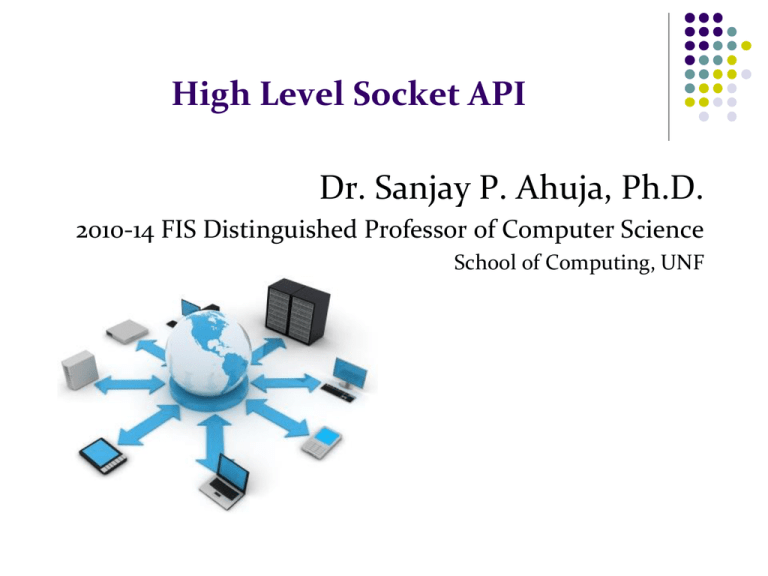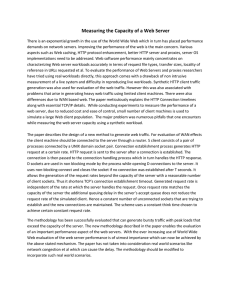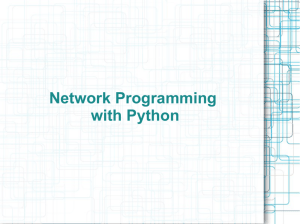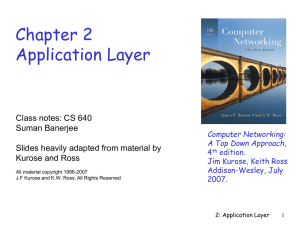High Level Socket API Dr. Sanjay P. Ahuja, Ph.D.
advertisement

High Level Socket API
Dr. Sanjay P. Ahuja, Ph.D.
2010-14 FIS Distinguished Professor of Computer Science
School of Computing, UNF
The Client-Server Model
An application that initiates communication is a client.
A server is any program that waits for incoming communication requests
from a client.
Standard client programs included with TCP/IP software include telnet
client, SSH client, email client, ftp client etc.
The client-server model involves requests and replies.
Types of Servers: Connectionless vs.
Connection-Oriented servers
If client and server communicate using User Datagram Protocol (UDP), the
interaction is connectionless. If they use Transmission Control Protocol
(TCP), the interaction is connection-oriented.
TCP provides the reliability needed to communicate across the Internet.
It retransmits segments that do not arrive correctly at the destination
It uses checksum to ensure data received is not corrupted during
transmission
It uses sequence numbers to ensure data arrives in order etc.
UDP provides “best-effort” service and does not guarantee reliable delivery.
It is suited to real-time, audio/video streaming traffic.
Types of Servers: Iterative vs.
Concurrent servers
An iterative server will service one client request before moving onto the next
request. In this scenario, queues can build up.
A concurrent server will spawn a new (child) process (or thread) to service a
client request and itself listen for the next client connection. This generally
provides quicker response time.
Server software must be explicitly programmed to handle concurrent client
requests because multiple clients contact a server using its single, well-known
protocol port.
The fork() function call is used to create a new process in UNIX/Linux. This
call causes the O/S to make a copy of the executing program and allows both
copies to run at the same time. The call returns a finite value (process ID# of
child process) to the calling (parent) process and a value of 0 to the child
process.
Types of Servers: Iterative vs.
Concurrent servers
The Socket API
TCP/IP software reside in the O/S. So application programs need to interact
with the O/S to use TCP/IP to communicate. The routines provided by the
O/S defines the API.
The Socket Interface from UC Berkeley is such an interface for the BSD UNIX
O/S for application programs to interact with the TCP/IP software residing in
the O/S.
A socket is one end-point of a two-way communication link between two
programs running on the network.
TCP/IP protocols define a communication endpoint to consist of an IP
address and a protocol port number.
Outline for typical concurrent servers
int pid,s, conn;
S = Socket( .. );
// fill in server address
Bind(s, ..);
Listen(s, LISTNQ);
while(1){
conn = Accept(s, ..); //blocking call
if( (pid = fork()) ==0)
{
close (s); //child closes listening socket
doit( conn); //service request
close(conn);
exit(0); //child exits
} // end of if
close(conn); //parent closes connected socket
}// end of while loop






